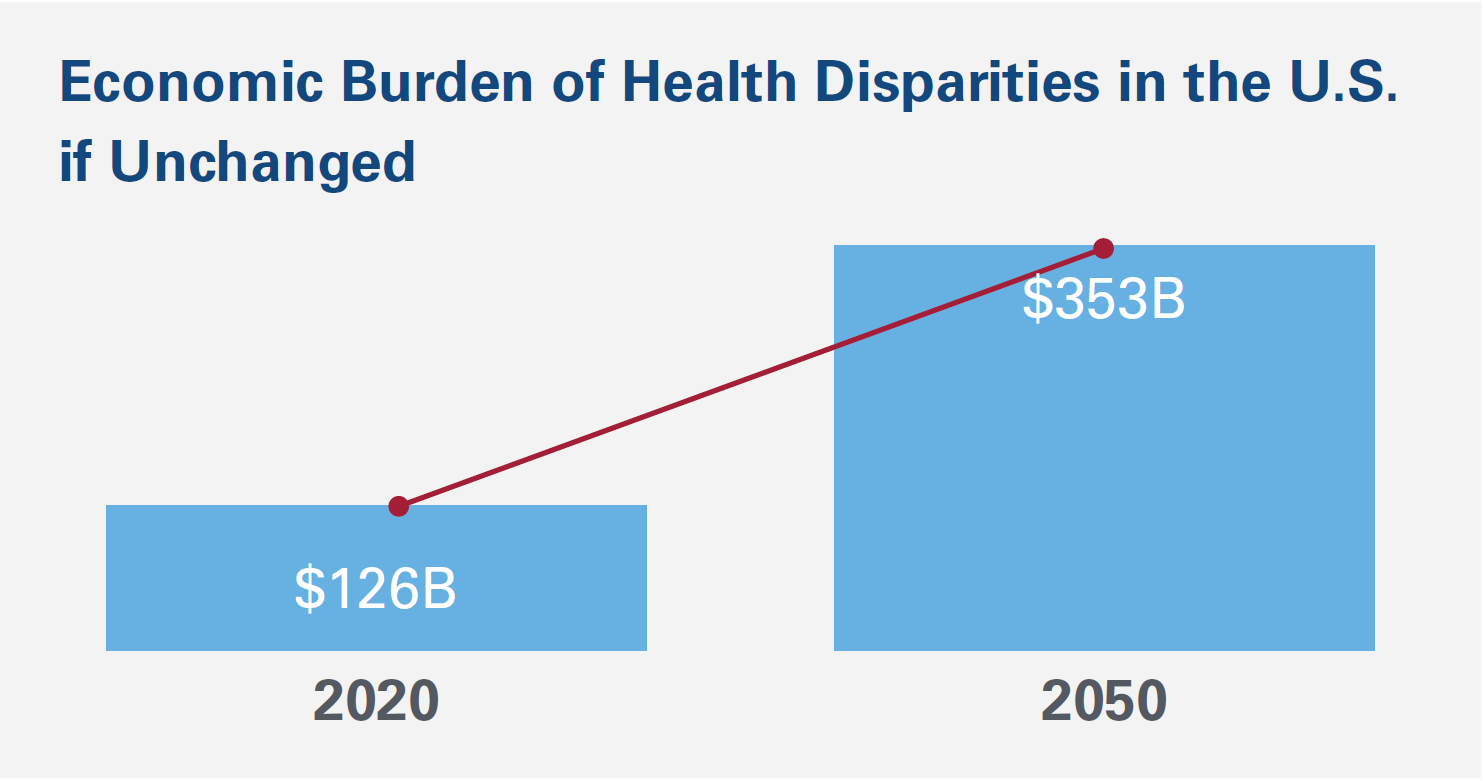4 Ways Health Care Organizations Can Utilize the Implicit Association Test (IAT)
Health care organizations strive to advance the health of their communities every day. Addressing health equity improves the quality of care. For example, hospitals have invested in cross-cultural training and medical interpretation services for patients with limited English proficiency to enable these patients to have greater autonomy in medical decision-making and ownership of their care.1
In addition, research has shown that health care organizations that are cognizant of health equity and health disparities are better aligned to provide value to patients and reduce costs (see Fig. 1).2 The interactions between multiple patient characteristics and between health care professionals are complex, and this can impact outcomes.3
Fig. 1: Economic Burden of Health Disparities in the U.S. if Unchanged

Hospitals and health systems are employing many strategies to improve health equity and promote value, and one of them is through diversity and inclusion training. The Implicit Association Test (IAT)4 is a useful tool that can be used to educate and strengthen the health care workforce.
The Implicit Association Test
Over the last 20 years, millions of people have used this online test to probe attitudes they may not have even been aware they had.
“The IAT is an experimental method designed to measure the strengths of associations linking social categories, like blacks versus whites, to evaluative anchors like good versus bad.”5 – Dr. Cecilia Mo, UC Berkeley
The Benefit of the IAT
We all have explicit and implicit biases. Explicit biases are ones we deliberately think about and can share. However, we might not be aware of implicit biases, whether positive or negative.
The key benefit of taking an IAT, originally developed by Harvard University researchers, is that we can become aware of these implicit biases and begin to address them. If we hold assumptions about others of which we are not aware, our performance and interaction with colleagues and patients might suffer. The IAT can be a springboard for facilitating discussion in the health care organization, making it a more diverse and inclusive workplace, better able to serve its unique community to help enable its residents reach their highest potential for health.
You can access the Implicit Association Test (IAT) here.
- Leadership and Governance: Consider administering the IAT as part of a facilitated training with board members and/or the executive leadership team of your organization.
- Clinical and Non-clinical Employee Training: Incorporate the IAT in the new employee orientation and/or annual required training. Couple with broader diversity, inclusion and unconscious bias training for greatest impact.
- Population Health: Consider providing targeted IAT training for defined patient populations (e.g., Lesbian, Gay, Bisexual, Transgender, Intersex) to uncover bias that may impact the administration of culturally competent care and experience of marginalized groups.
- Human Resources and Talent Management: Administer the IAT within hiring teams as a precursor to the recruiting process. Additionally, build the IAT into teambuilding and leadership development programs already established within the organization. Focus on bringing awareness to, and improvement of unconscious bias for current and future leaders.
Sources
- Impact of Interpreter Services on Delivery of Health Care to Limited–English-proficient Patients. Accessed at: https://www.ncbi.nlm.nih.gov/pmc/articles/PMC1495243/
- American Health & Drug Benefits: Health Inequities in America. Accessed at: https://www.ncbi.nlm.nih.gov/pmc/articles/PMC5620509/pdf/ahdb10-279.pdf
- Fitzgerald et al, Implicit bias in healthcare professionals systematic review; BMC Med Ethics. 2017; 18:19
- Harvard University Implicit Association Test. Accessed at: https://www.projectimplicit.net/index.html
- Sexism rules in the ballot booth unless voters have more information. Accessed at: https://news.vanderbilt.edu/2015/11/09/sexism-rules-in-theballot-booth-unless-voters-have-more-information/

